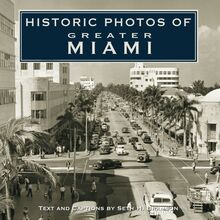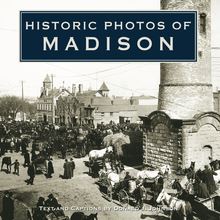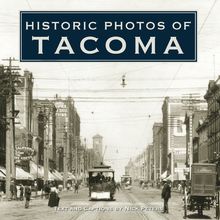Historic Photos of San Antonio , livre ebook
188
pages
English
Ebooks
2007
Vous pourrez modifier la taille du texte de cet ouvrage
Obtenez un accès à la bibliothèque pour le consulter en ligne En savoir plus
Découvre YouScribe en t'inscrivant gratuitement
Découvre YouScribe en t'inscrivant gratuitement
188
pages
English
Ebooks
2007
Vous pourrez modifier la taille du texte de cet ouvrage
Obtenez un accès à la bibliothèque pour le consulter en ligne En savoir plus
Publié par
Date de parution
01 août 2007
Nombre de lectures
2
EAN13
9781618586797
Langue
English
Poids de l'ouvrage
11 Mo
Publié par
Date de parution
01 août 2007
Nombre de lectures
2
EAN13
9781618586797
Langue
English
Poids de l'ouvrage
11 Mo
HISTORIC PHOTOS OF
SAN ANTONIO
T EXT AND C APTIONS BY F RANK S. F AULKNER , J R .
Looking northeast from the top of Pioneer Flour Mills towards downtown in the late 1930s. The town has grown since the early 1920s, and skyscrapers fill the center of the city. The Johnson Street Bridge can be seen in the bottom foreground.
HISTORIC PHOTOS OF
SAN ANTONIO
Turner Publishing Company
200 4th Avenue North Suite 950
Nashville, Tennessee 37219
(615) 255-2665
www.turnerpublishing.com
Historic Photos of San Antonio
Copyright 2007 Turner Publishing Company
All rights reserved.
This book or any part thereof may not be reproduced or transmitted in any form or by any means, electronic or mechanical, including photocopying, recording, or by any information storage and retrieval system, without permission in writing from the publisher.
Library of Congress Control Number: 2007923677
ISBN: 978-1-59652-378-4
Printed in China
09 10 11 12 13 14-0 9 8 7 6 5 4 3
C ONTENTS
A CKNOWLEDGMENTS
P REFACE
T HE B EGINNINGS OF P ROSPERITY (1860 S -1899)
F ROM T OWN TO C ITY (1900-1919)
F ROM THE H EIGHTS TO THE D EPTHS (1920-1939)
F ROM D EPRESSION TO E LATION (1940-1969)
N OTES ON THE P HOTOGRAPHS
Cadets from Peacock Military Academy seated in decorated carriages in front of the Menger Hotel during the Battle of Flowers Parade, April 1904. Peacock Academy was opened by Wesley and Saline Peacock on September 4, 1894, near West End Lake (later renamed Woodlawn Lake). It was built about three miles from downtown, at the time the area was seeing a real estate boom. Also, note that the street is paved with mesquite blocks.
A CKNOWLEDGMENTS
This volume, Historic Photos of San Antonio , is the result of the cooperation and efforts of
Library of Congress
Texana/Genealogy Department of the San Antonio Public Library
University of Texas at San Antonio, Institute of Texan Cultures
The author would like to thank the following individuals for their contributions and assistance in making this work possible:
Deborah Countess, Texana/Genealogy, for proofreading and editing
Andrew Crews, Texana/Genealogy, for preparing Texana/Genealogy photographs
Maria Pfeiffer, local researcher, for checking historical data
Thomas Shelton, Institute of Texan Cultures, for helping to identify some photographs
Clarissa Chavira and T. Matthew DeWaelsche, Texana/Genealogy, for watching the reference desk while I took off to do the research
Linda Faulkner, my wife, for everything
P REFACE
This book begins in the 1860s when photography began to be popular, but the city is much older. It owes its origin and survival to water deep underground to the north and west of the city in what is called the Edwards Aquifer. In prehistoric times, springs bubbled to the ground s surface and, over millennia, created the San Antonio River. Native Americans congregated on its banks long before Mexico, which included present-day Texas, became a Spanish colony.
In 1691, Domingo Teran de los Rios led an expedition that arrived at the river near present San Pedro Park on June 13, the feast day of Saint Anthony. In 1718, Martin de Alarcon received instructions to establish two missions in the area. Villa de Bejar was founded May 5, and on March 9, 1731, sixteen families arrived from the Canary Islands to establish Villa de San Fernando. Three other missions were begun, and a civil government was soon created to complement the ecclesiastical and military organizations. An official census taken in December 1783 shows a population of 1,392.
Over the years, tensions grew between Spain and its Mexican colonists. On September 16, 1810, Father Miguel Hidalgo began a revolution that reached Texas in 1812, when Augustus Magee-an American-and Bernardo Gutierrez de Lara raised a Republican Army of the North. After defeats by Royalists at La Bahia, Rosillo, Salado, Medina, and Alazan, the revolution ended in the San Antonio area, and most of the remaining revolutionaries were put to death. The revolution succeeded elsewhere, however, and Mexico became an independent nation in 1821.
Moses Austin, from Missouri, successfully petitioned the Mexican government to establish a colony in Texas for immigrants from the United States but died soon after it was granted. His son, Stephen F. Austin, carried on the plan and stopped in San Antonio in 1821 before pushing on 175 miles north. Settlers began arriving in 1825, and there were those in the United States who advocated annexing Texas. When Santa Anna came to power in Mexico in 1833, overthrowing the Constitution of 1824 and the colonization laws, unrest escalated to revolution. For thirteen days, ending March 6, 1836, a small band of Texans defied a vastly larger Mexican army under Santa Anna at the Alamo. Their heroic, hopeless stand bought time for the revolutionary army and made San Antonio famous around the world. Texas won its independence and remained a republic through 1845, when it became the twenty-eighth state of the United States.
The majority of Americans who came to Texas were from the South and brought an acceptance of slavery with them. The state sided with the Southern Confederacy in the Civil War, but in the popular referendum on secession held on February 23, 1861, over 40 percent of the citizens of Bexar County opposed leaving the United States. The county, according to the 1860 federal census, had only 1,395 slaves out of a total population of 14,454. Some who opposed the war left, going north or west, including James P. Newcomb, a newspaper editor who went to California. Others left for Mexico or Germany, to return after the war.
During the republic and early years of statehood, a flood of German immigrants created a cultural foundation that dominated the region until their influence was overpowered in the twentieth century by a large influx of refugees from the Mexican Revolution of 1910-1921 and anti-German sentiment during the two World Wars.
At the close of the Civil War, San Antonio was still a frontier outpost, but with a population of about 15,000, an equal number of Americans, Germans, and Hispanics. Within the city were five churches and several schools: a German-English school (150 scholars), a free school (200 pupils), two designated as Negro schools ( one taught by a Northern man and one by a negro, according to The Texas Almanac for 1867), and a Catholic College (200-300 students). Between 1866-1867, about 200 new buildings were erected. The city had gas lights, an ice manufactory, five mills, five newspapers, and five bridges. Good land sold for $10 to $50 an acre, and less desirable land from $5 to $10 an acre.
- Frank S. Faulkner, Jr .
With the exception of touching up imperfections caused by the vicissitudes of time and cropping where necessary, no other changes have been made to the photos in this book. The focus and clarity of many images is limited to the technology of the day and the skill of the photographer who captured them.
We encourage readers to reflect as they explore San Antonio, stroll along its streets, or wander its neighborhoods. It is the publisher s hope that in making use of this work, longtime residents will learn something new and that new residents will gain a perspective on where San Antonio has been, so that each can contribute to its future.
- Todd Bottorff, Publisher
Haymarket Square or Plaza ( La Plaza del Zacate ) on a fair-weather day was full of sights, sounds, and aromas. Here, farmers brought flowers, vegetables, and fruit to sell to city residents. At night it would be filled with music, dancing, and food.
T HE B EGINNINGS OF P ROSPERITY
(1860 S -1899)
Reconstruction was hardly better than the war had been, but progress came on several fronts that would ultimately bring prosperity. Soldiers stationed in San Antonio to protect freedmen of color also protected whites from attacks by Comanches and other native tribes. The city became a supply depot for troops here and in outposts to the west. In 1870 the first forty acres of what would become Fort Sam Houston was donated to the United States government. Educational and social institutions thrived, and churches were built. Public schools, including the Rincon school, the first public school for the children of freed slaves, were constructed. The Casino Association made up of German speakers opened in 1858 for music, literary, social, and athletic activities. Newspapers in English, German, and Spanish met the needs of all readers.
The Market House opened in 1858, and gas lighting illuminated the plazas for the first time in 1869, the same year Santa Rosa Hospital was built. The beef market increased throughout the country as railroads provided a means to ship cattle across the United States. Cattle drives from South Texas to railroad connections helped everyone along the route, including the citizens of San Antonio. The first Agricultural and Industrial Association of West Texas fair was held here during December 1868 to show off local products.
The first train of the Galveston, Harrisburg San Antonio Railroad pulled into the city in 1877. On February 5, 1881, the International Great Northern arrived. Soon, San Antonio had several passenger and freight lines. Cattle could now be shipped directly from here, and wool also became a major product sold to northern markets. In 1889, some 84,000 head of cattle were bought and sold, 70,000 horses, 160,000 sheep, and 7,000,000 pounds of wool were traded. In 1875, only 300,000 pounds of wool had come through San Antonio.
On February 15, 1898, the battleship Maine blew up in the harbor at Havana, Cuba, killing 260 Americans and resulting in the Spanish-American War. Future president Theodore Roosevelt came west to raise a regiment of cavalry, popularly known as the Rough Riders. Part of the recruiting and training took place in San Antonio.
The Vance Building on the northeast corner of Houston and St. Mary s streets, built by John and James Vance, f














